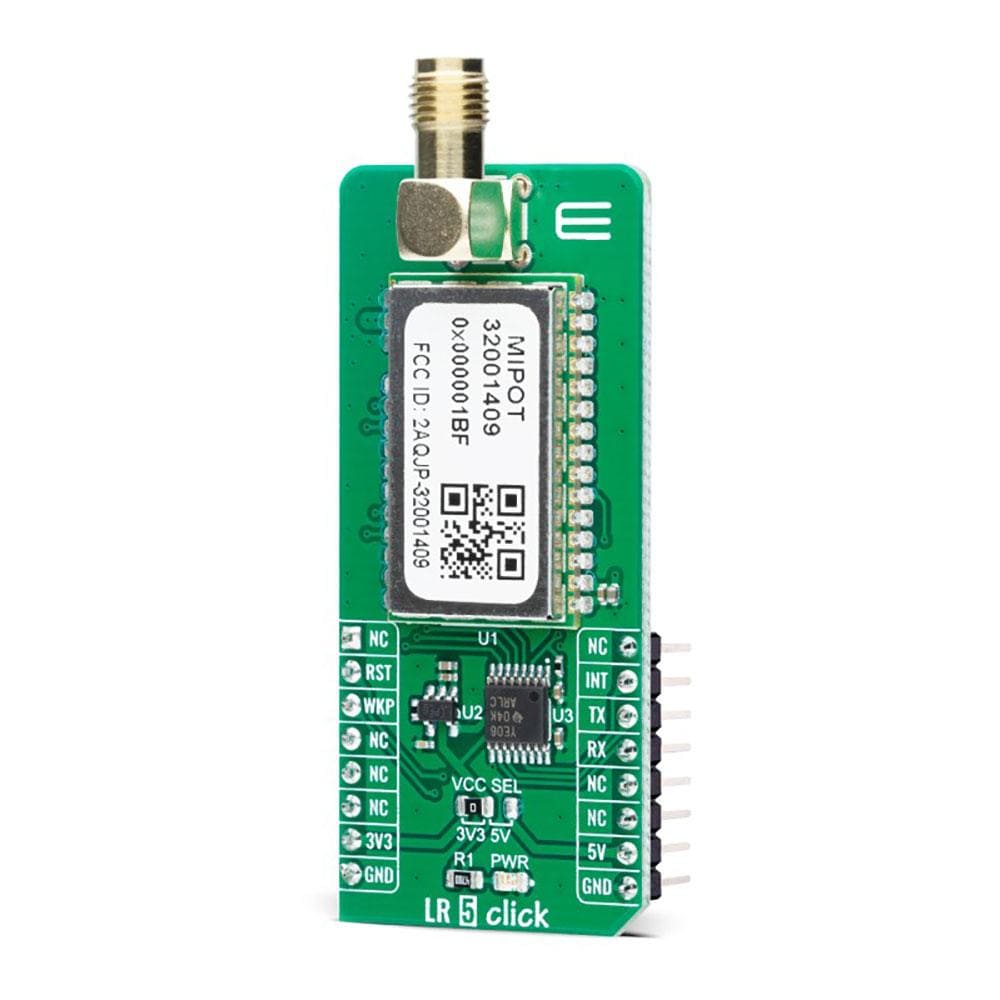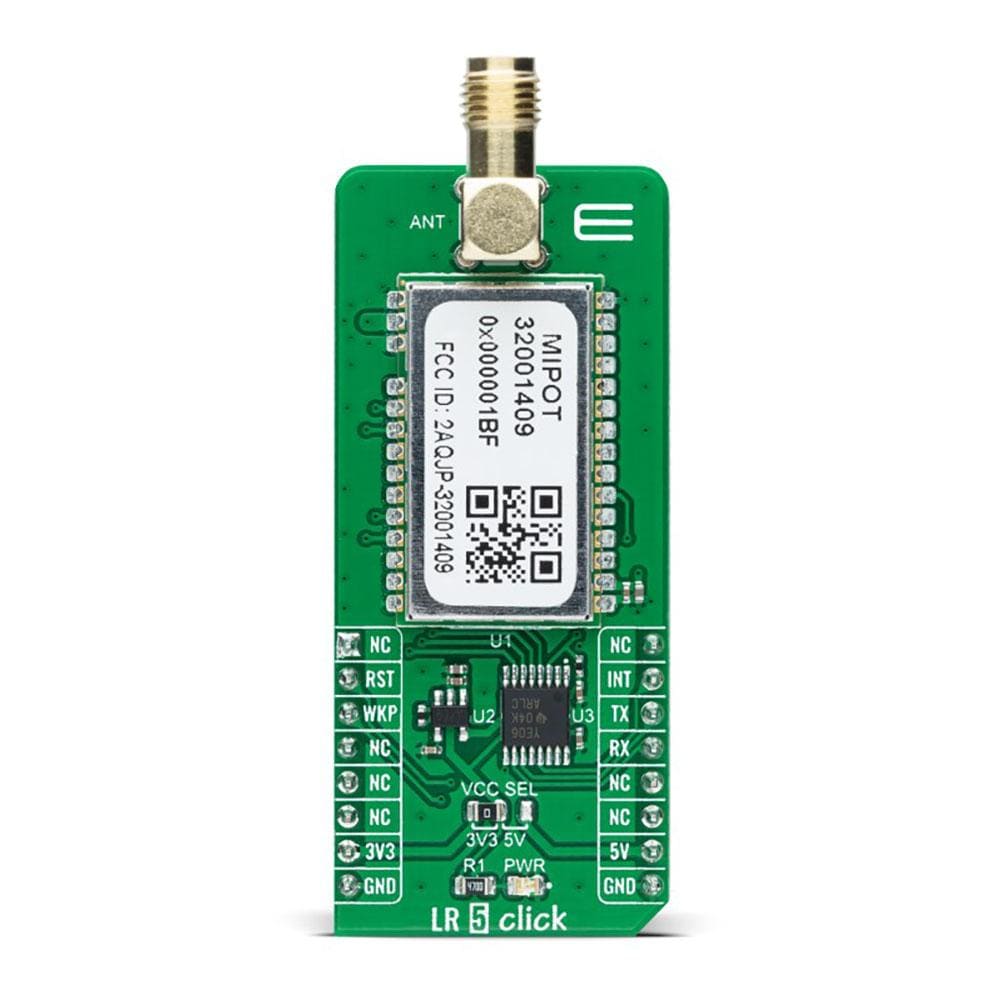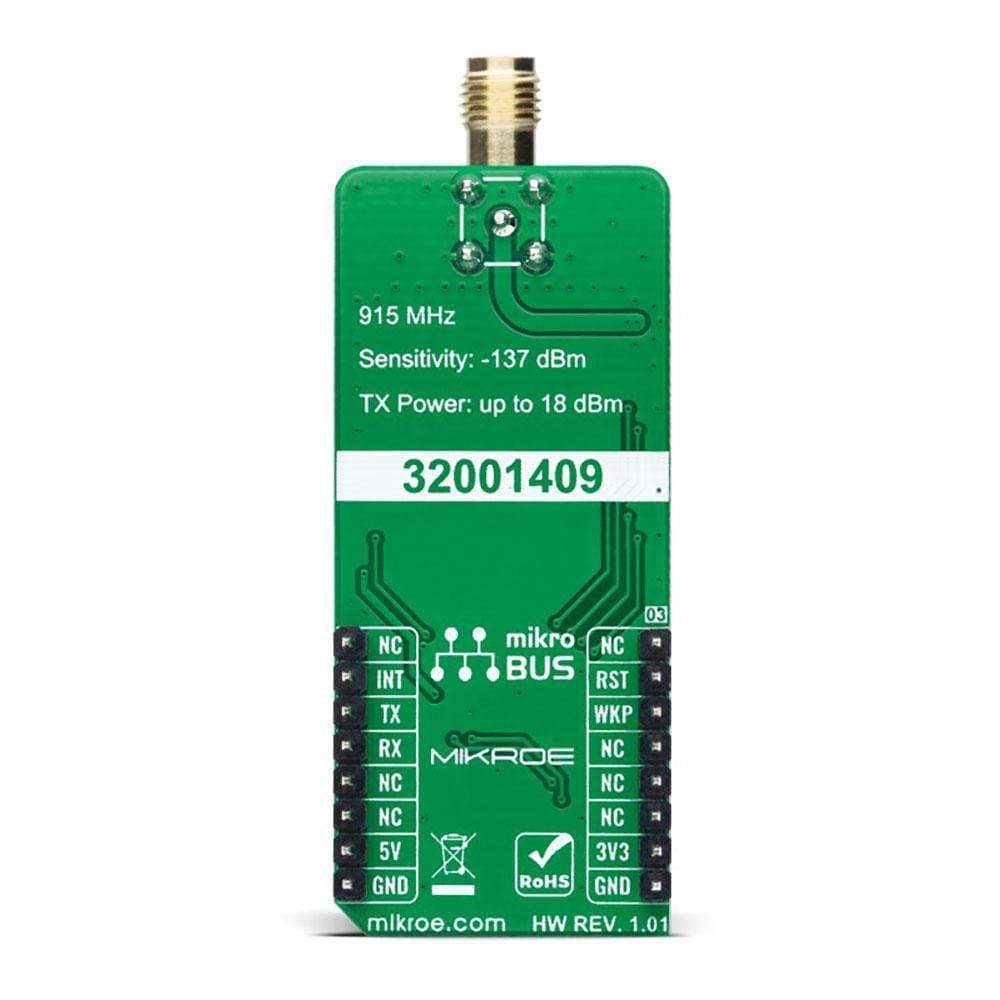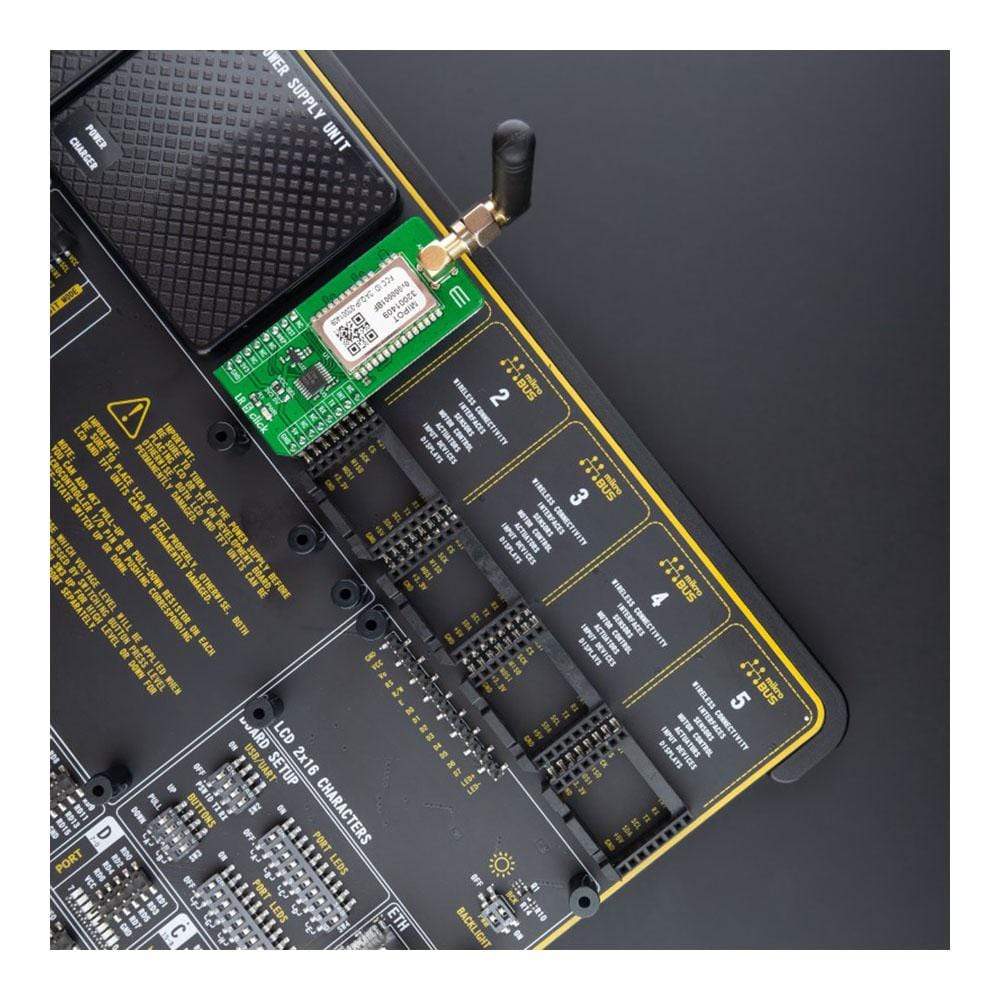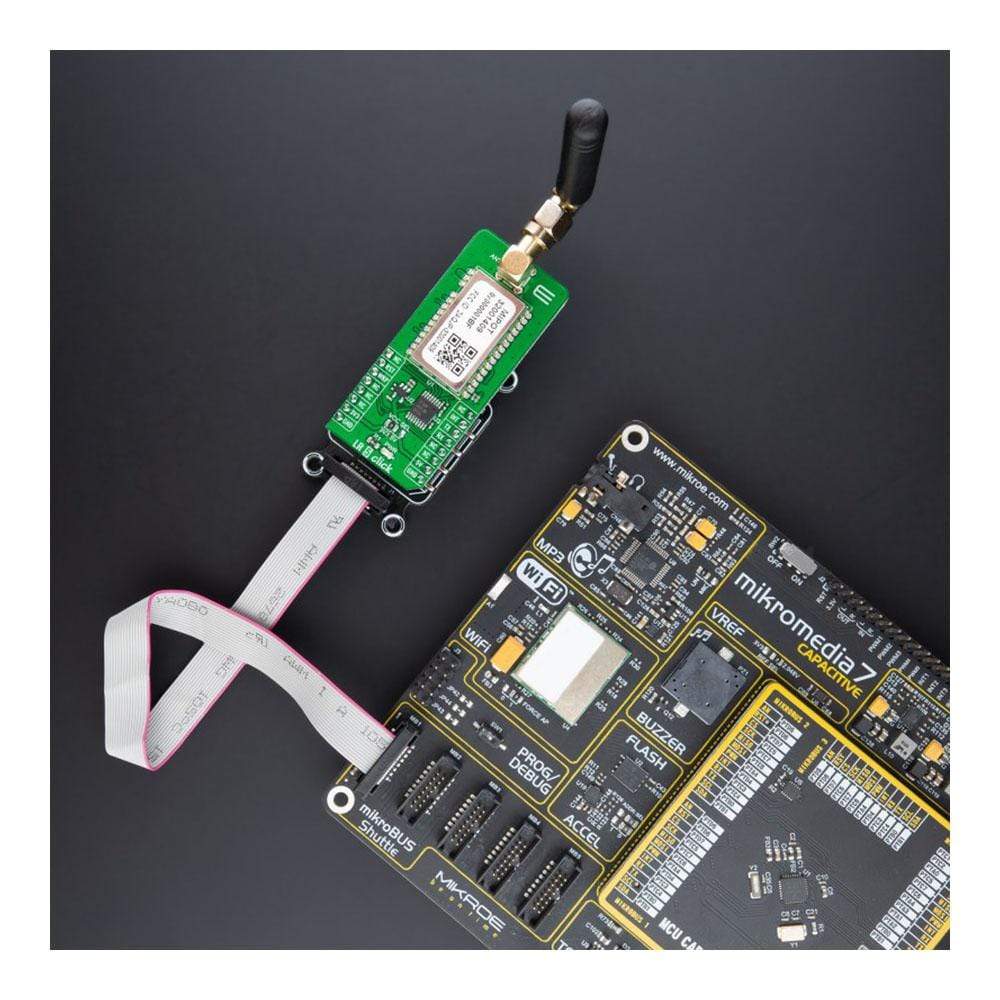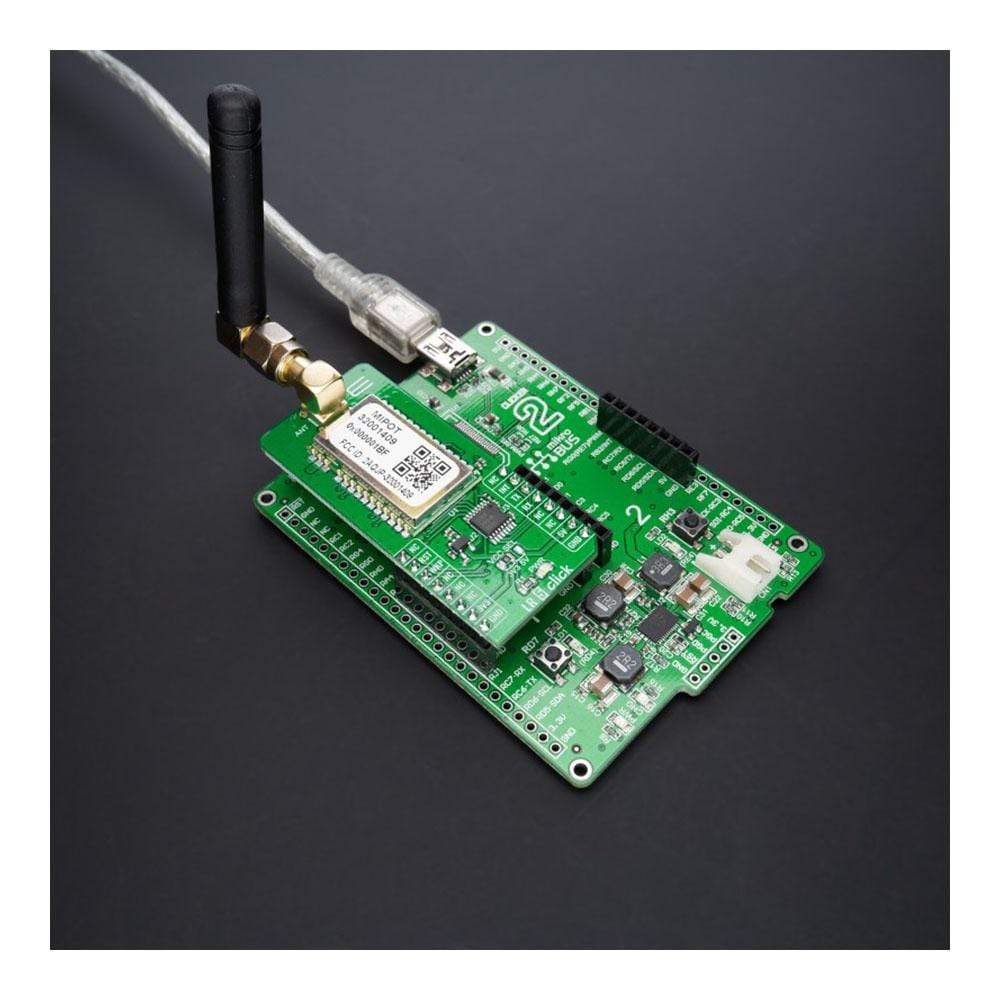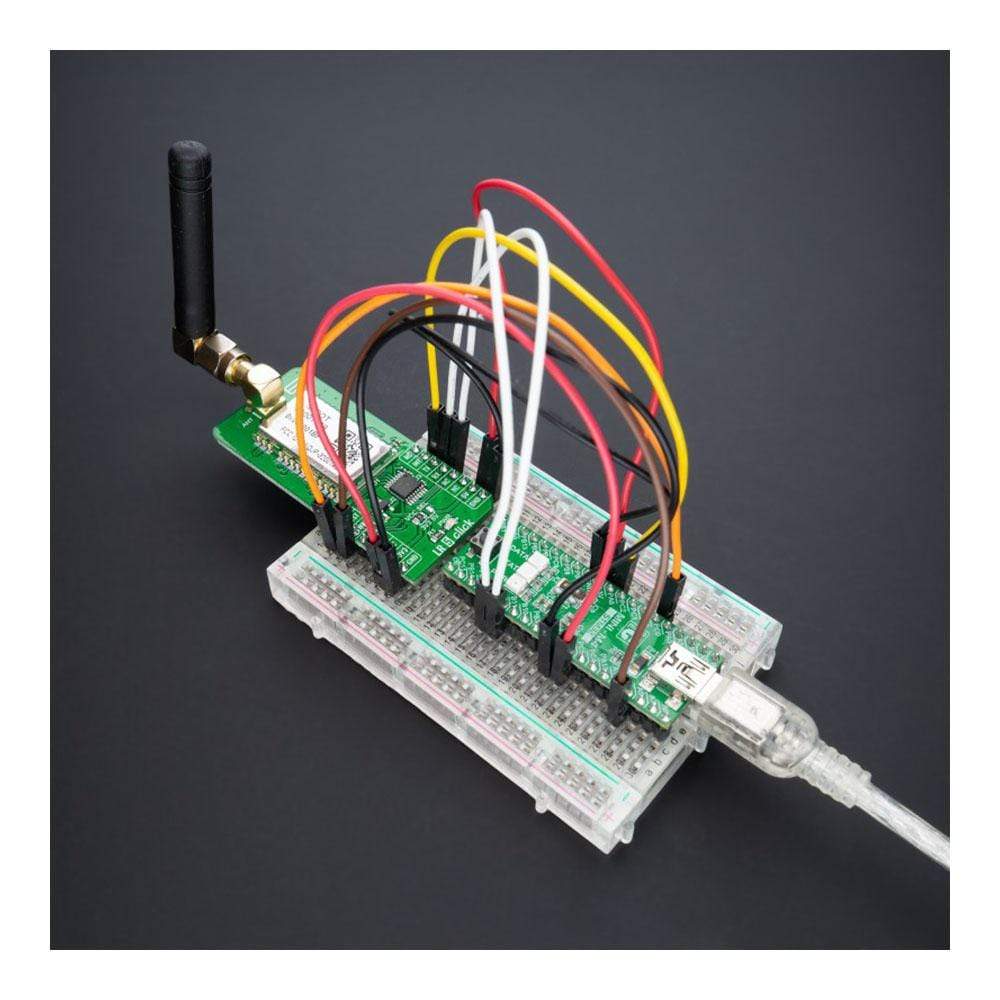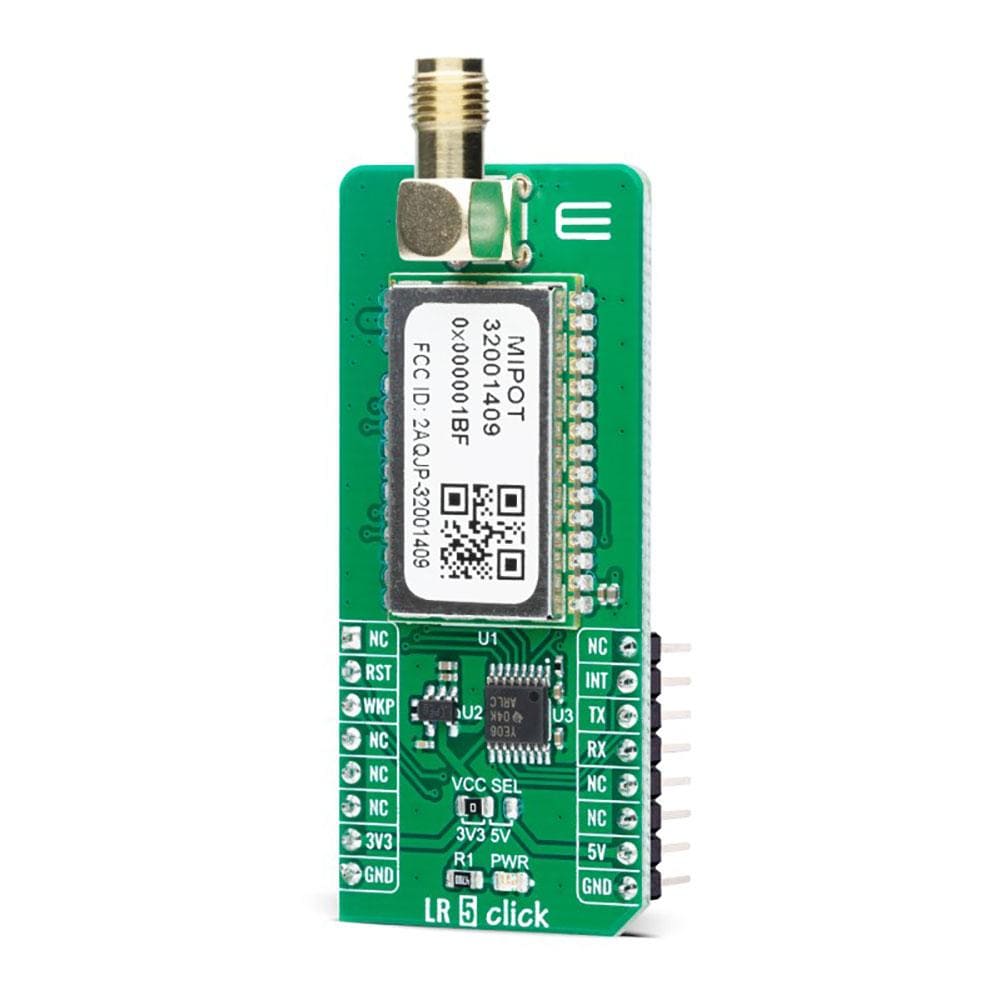
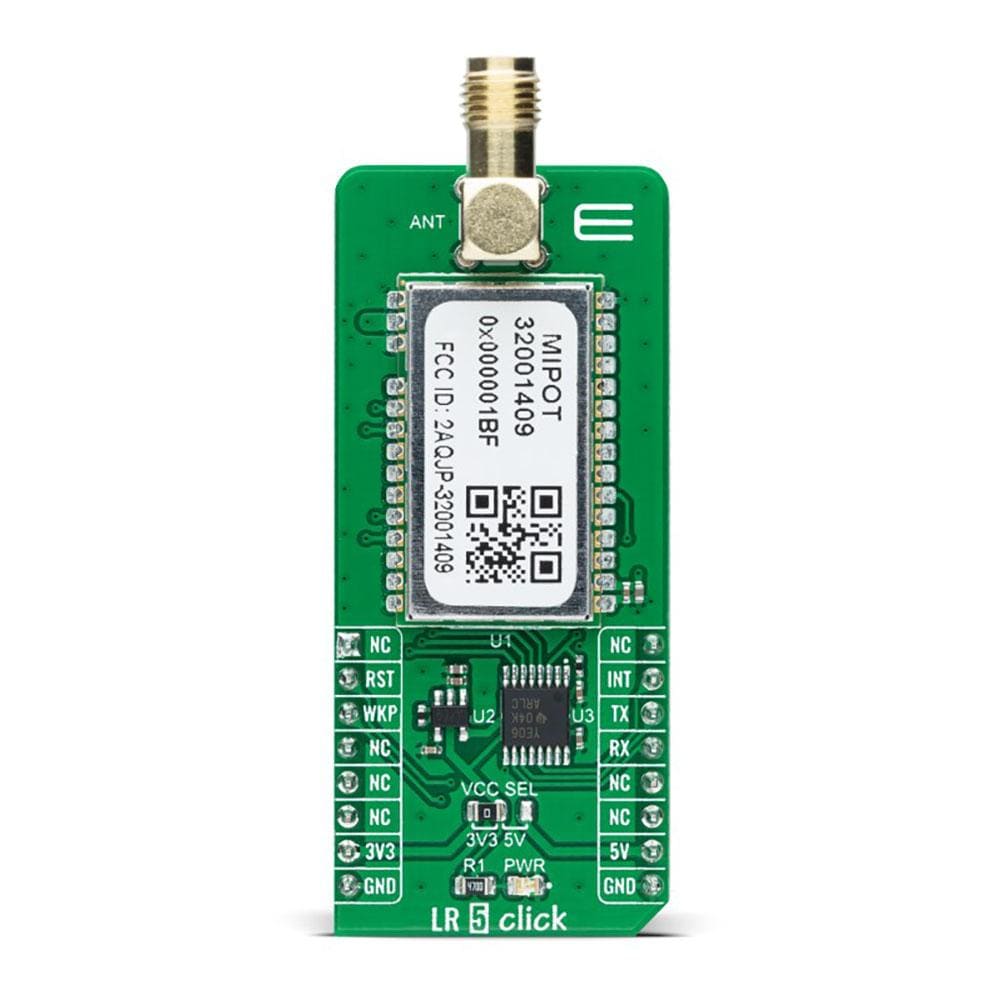
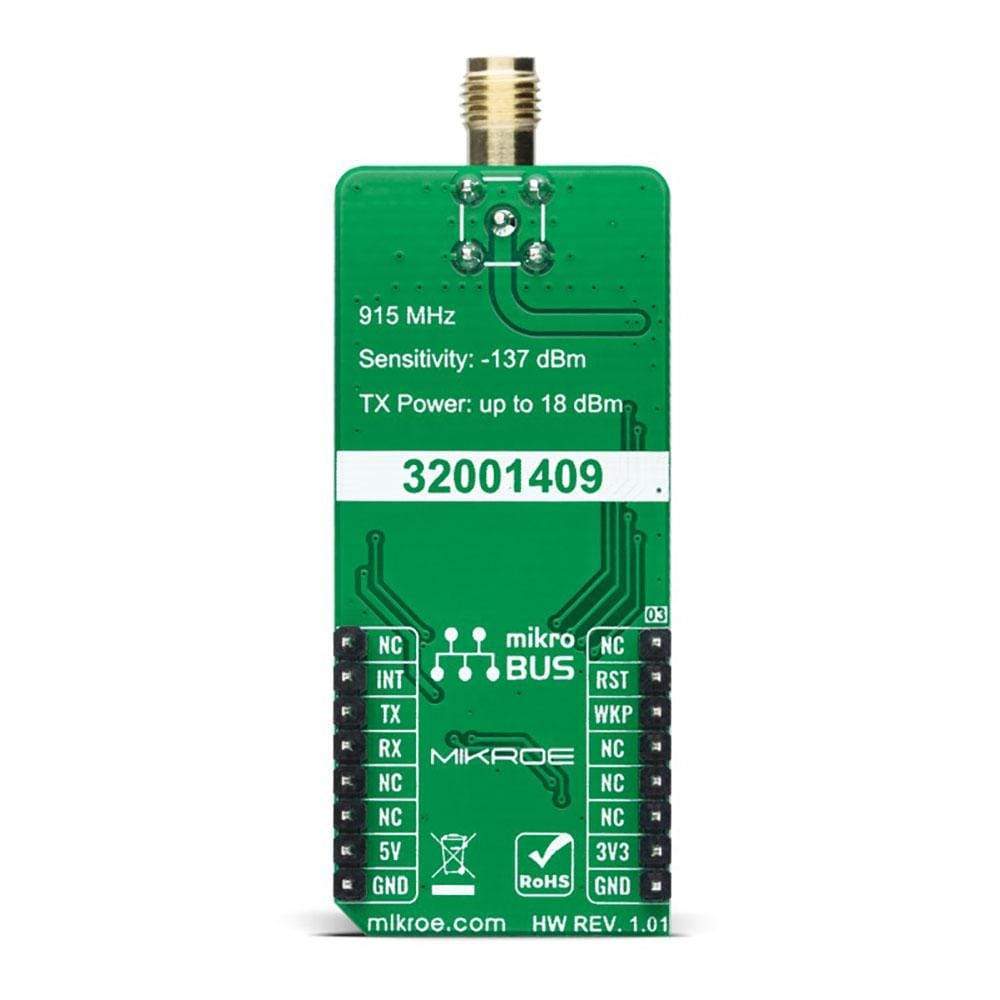
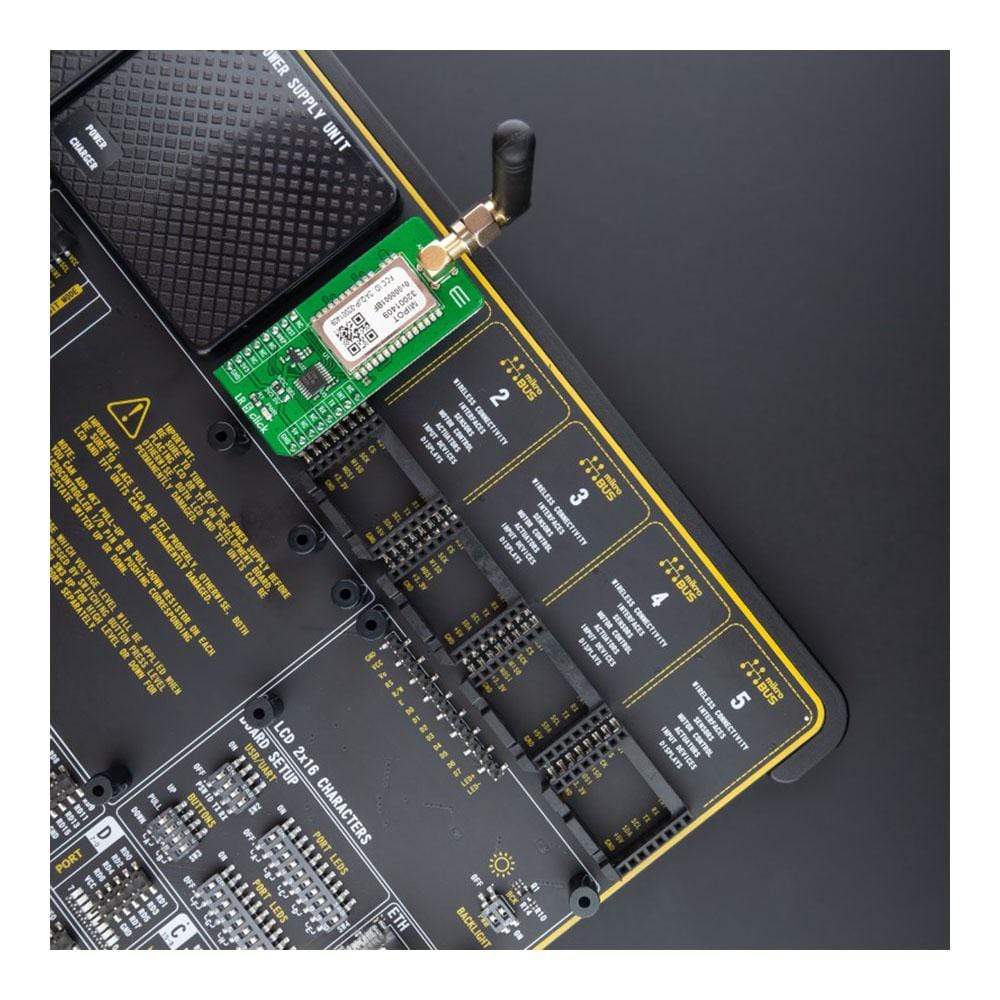
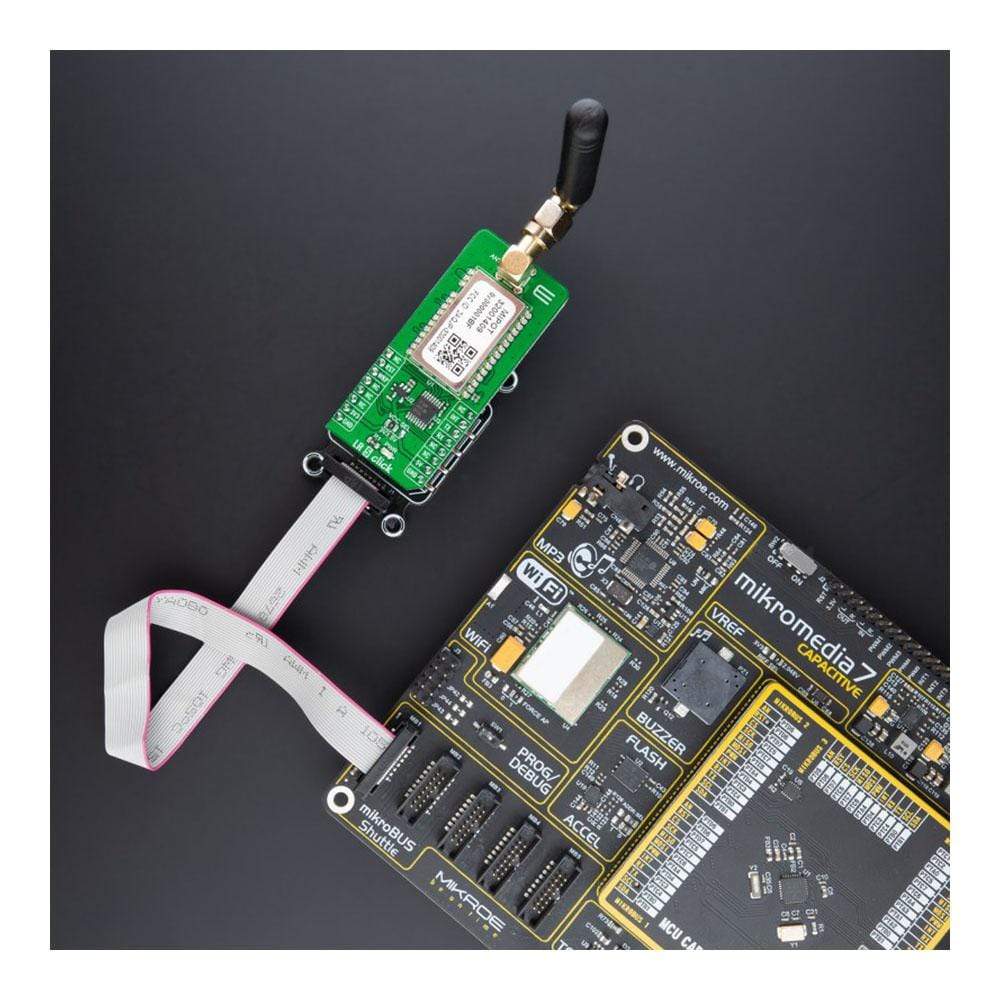
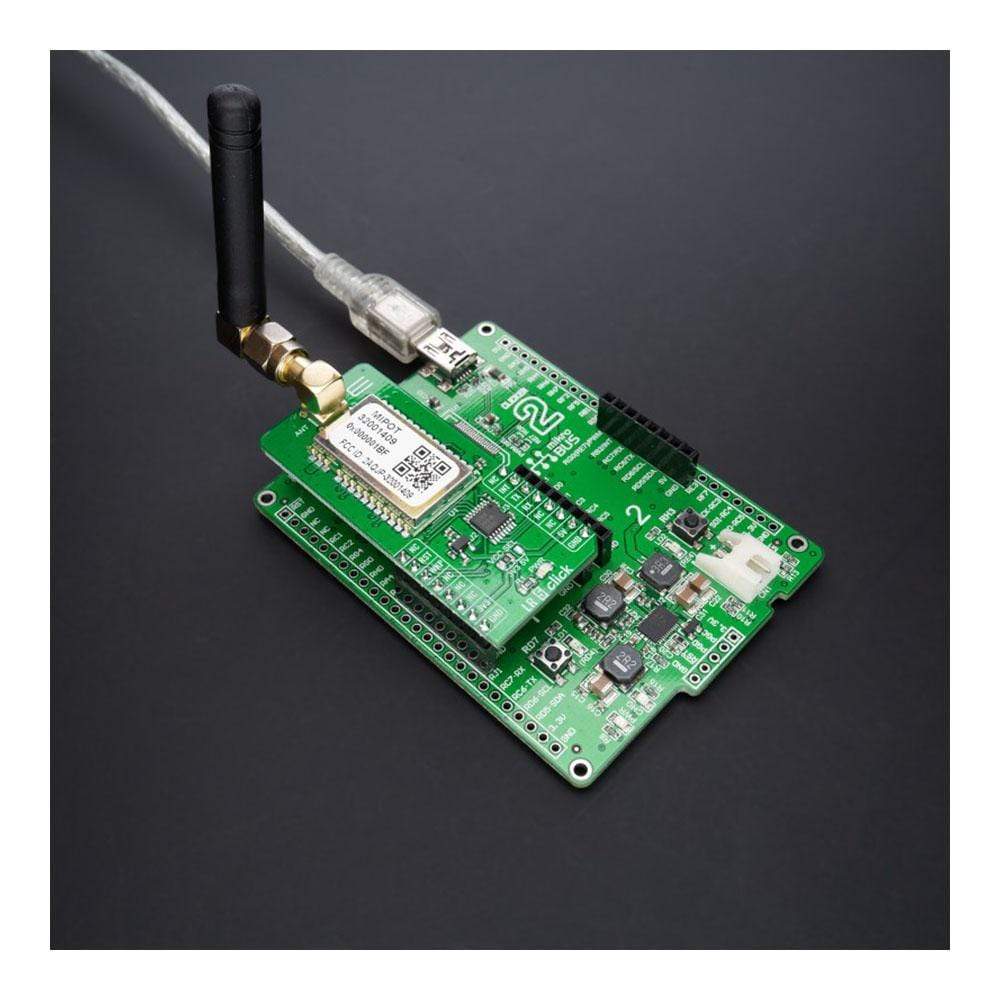
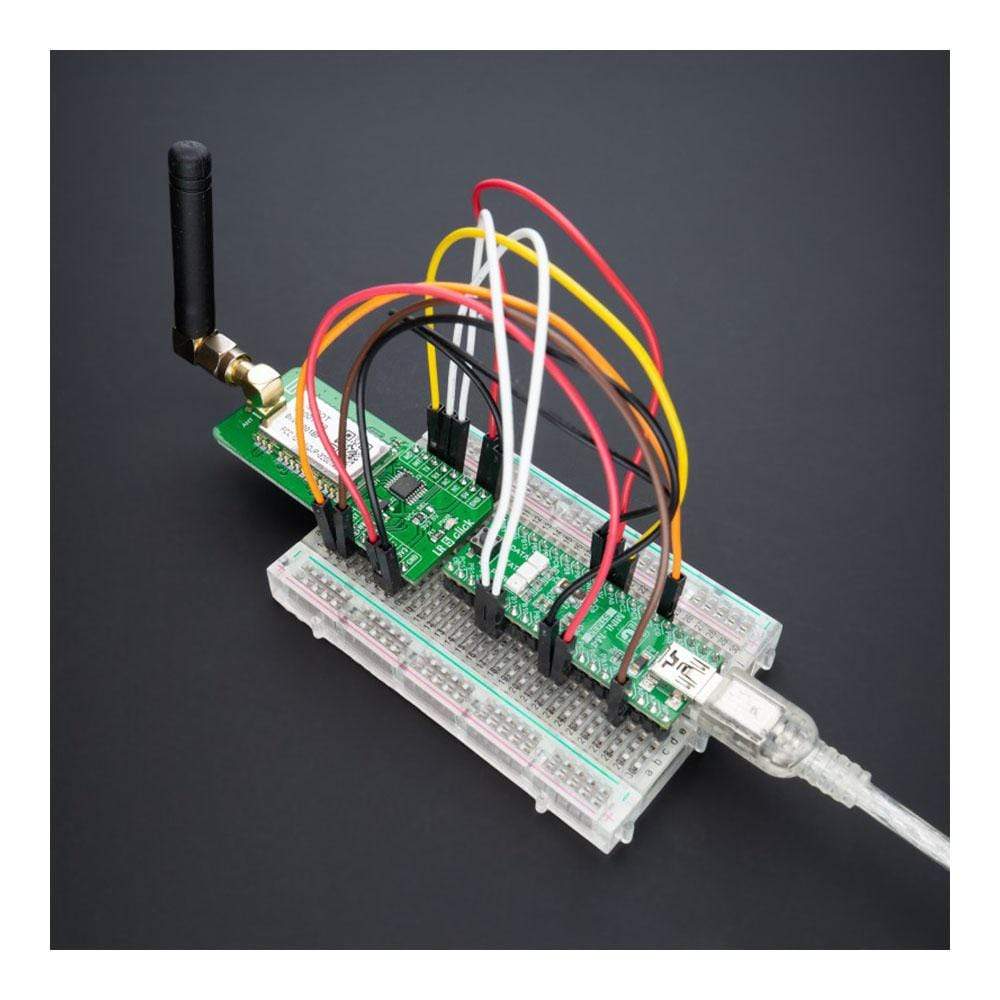
Overview
The LR 5 Click Board™ is a compact add-on board that contains a long-range transceiver. This board features the 32001409, RF technology-based SRD transceiver, which operates at a frequency of 915MHz from Mipot. Thanks to the spread spectrum modulation feature, as well as the low power consumption, it is capable of achieving long-range communication, immune to interferences. It features a complete long-range stack onboard; it implements physical, network, and MAC layers, allowing for easy operation via the UART interface. This Click Board™ offers an easy and reliable solution for developing highly integrated long-range IoT networks, security systems, alarm networks, and similar applications that require simple and reliable networking solutions.
The LR 5 Click is supported by a mikroSDK compliant library, which includes functions that simplify software development. This Click Board™ comes as a fully tested product, ready to be used on a system equipped with the mikroBUS™ socket.
Note: This Click Board is certified for use in the North American Region.
Downloads
La carte Click Board™ LR 5 est une carte complémentaire compacte qui contient un émetteur-récepteur longue portée. Cette carte est équipée de l'émetteur-récepteur SRD 32001409 basé sur la technologie RF, qui fonctionne à une fréquence de 915 MHz de Mipot. Grâce à la fonction de modulation à spectre étalé, ainsi qu'à la faible consommation d'énergie, elle est capable d'atteindre une communication longue portée, à l'abri des interférences. Elle dispose d'une pile longue portée complète à bord ; elle implémente des couches physique, réseau et MAC, permettant un fonctionnement facile via l'interface UART. Cette carte Click Board™ offre une solution simple et fiable pour développer des réseaux IoT longue portée hautement intégrés, des systèmes de sécurité, des réseaux d'alarme et des applications similaires qui nécessitent des solutions de mise en réseau simples et fiables.
Le LR 5 Click est pris en charge par une bibliothèque compatible mikroSDK, qui comprend des fonctions qui simplifient le développement logiciel. Cette Click Board™ est un produit entièrement testé, prêt à être utilisé sur un système équipé du socket mikroBUS™.
Remarque : ce Click Board est certifié pour une utilisation dans la région nord-américaine.
| General Information | |
|---|---|
Part Number (SKU) |
MIKROE-4618
|
Manufacturer |
|
| Physical and Mechanical | |
Weight |
0.02 kg
|
| Other | |
Country of Origin |
|
HS Code Customs Tariff code
|
|
EAN |
8606027382451
|
Warranty |
|
Frequently Asked Questions
Have a Question?
Be the first to ask a question about this.

